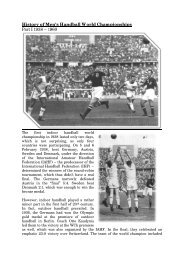Beach handball - IHF
Beach handball - IHF
Beach handball - IHF
Create successful ePaper yourself
Turn your PDF publications into a flip-book with our unique Google optimized e-Paper software.
If the team in possession does not make a recognizable attempt to get into<br />
position to take a shot on goal, then one of the referees whistles for passive<br />
play and awards a free-throw to the opponents.<br />
During an attack (which begins when the team gets into possession of the ball<br />
and ends when it either scores a goal or loses possession) the forewarning<br />
signal should be given only once.<br />
However, at the first interruption of the game after the forewarning signal has<br />
been shown, the referees should show the forewarning signal briefly again as a<br />
reminder before the game is restarted.<br />
If the attacking team were to request a team time-out after the forewarning<br />
signal has been shown, then the forewarning signal should be shown again<br />
when the game is being restarted after the team time-out, in order to emphasize<br />
that the warning is still in effect.<br />
5. Unsportsmanlike conduct (8:4, 16:1d, 16:6 b)<br />
Examples of unsportsmanlike conduct are:<br />
a) shouting at the player who is taking a 6-meter throw;<br />
b) kicking the ball away during a stoppage, so that the opponent cannot<br />
immediately execute the throw that has been awarded;<br />
c) verbally abusing an opponent or a team-mate;<br />
d) when a player or team official does not give up the ball when it has ended<br />
up outside the side line;<br />
e) delaying the execution of a formal throw;<br />
f) holding on to an opponent by grabbing the uniform;<br />
g) if a goalkeeper does not give up the ball when a 6 meter throw has<br />
been awarded to the opponent;<br />
h) if a court player is repeatedly blocking shots with a foot or lower<br />
leg;<br />
I) if defending players repeatedly enter their goal area;<br />
j) if a player tries to create the (incorrect) impression that an opponent<br />
committed an infraction.<br />
6. Seriously unsportmanlike conduct (8:6, 16:6-e)<br />
Examples of seriously unsportsmanlike conduct are:<br />
a) insulting behavior (through speech, facial expressions, gestures or body<br />
contact) directed at another person (referee, timekeeper/scorekeeper,<br />
delegate, team official, player, spectator etc.);<br />
b) throwing or pushing the ball away after a decision by the referees, if the<br />
ball goes so far that the action cannot be seen as just unsportsmanlike<br />
conduct;<br />
53


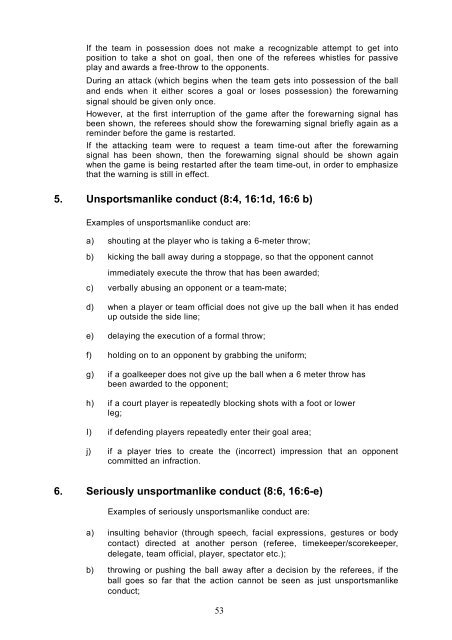

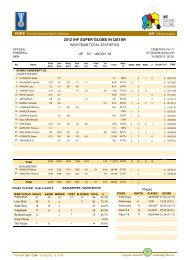


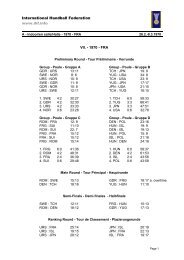
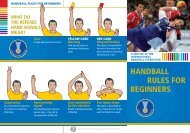
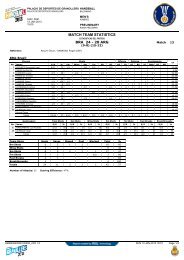


![[IHF- Referee list 2012/2013]](https://img.yumpu.com/18217761/1/184x260/ihf-referee-list-2012-2013.jpg?quality=85)
